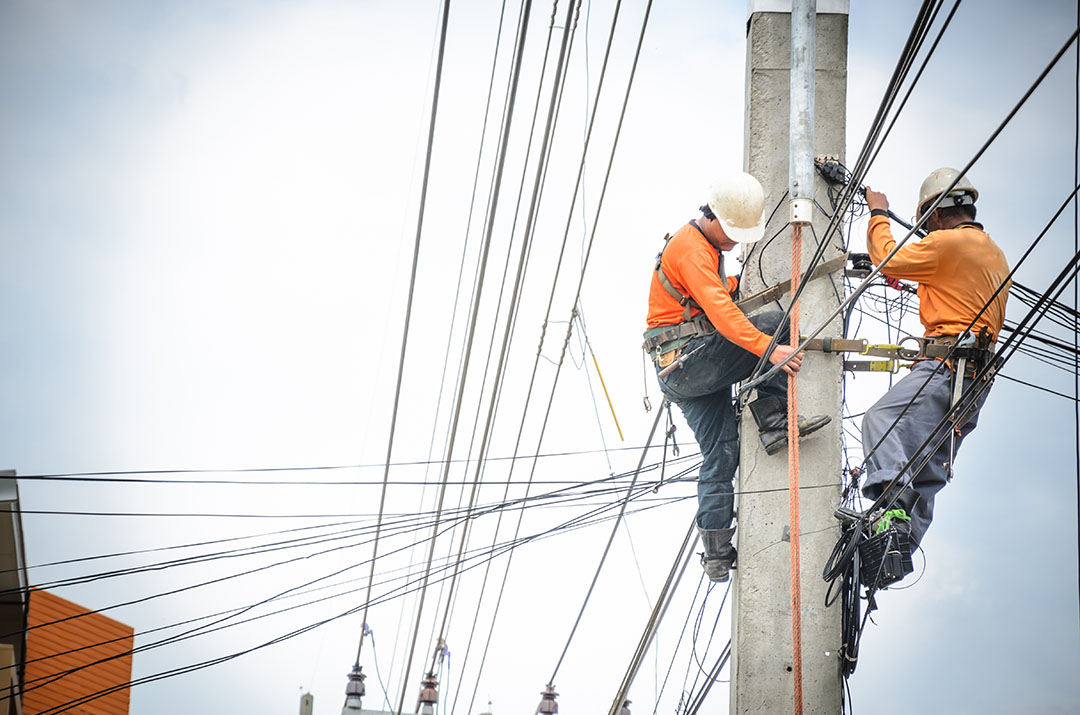Introduction
According to the Bureau of Labor Statistics, there are approximately 2,300 electrical-related injuries and 186 electrical-related fatalities in the U.S. each year. As little as 6 milliamperes are enough to cause pain and loss of muscle control, so it is critical for everyone to be aware of, and respect the dangers of, electricity.
Certain employees work with or around electricity at or above 601 volts, which the Department of Energy defines as high voltage. These employees and their employers must take special precautions.
Basics of Electricity
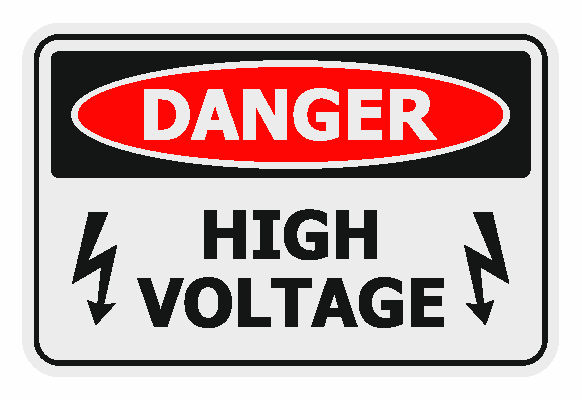
All materials have different levels of electrical resistance. Insulators are materials that slow down or stop electricity, including:
- Glass
- Plastic
- Rubber
- Cotton
Conductors are materials that provide little resistance to electricity, including:
- Sea water
- Copper
- Gold
- Aluminum
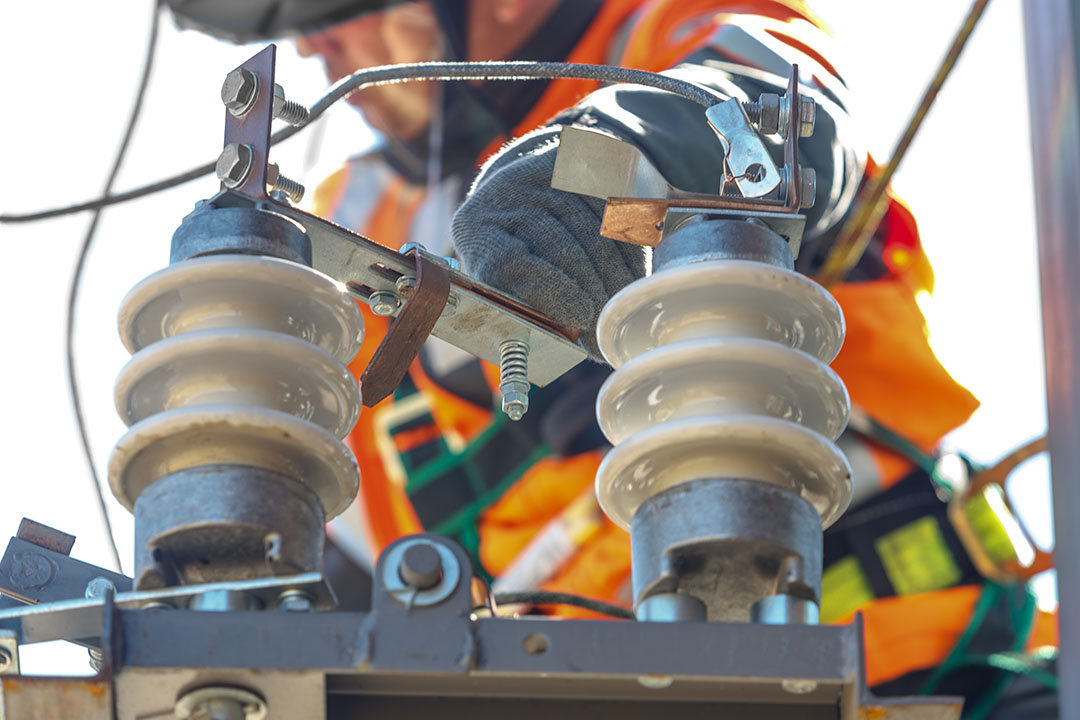
Certain substances conduct differently depending on the situation. For example, pure water is not a good conductor, but it can become conductive when contaminated with impurities like salts, acids and solvents. Dry skin is not a good conductor, but skin dampened by sweat, water or other liquids is. Employees working in damp, wet or hot conditions should take extra precautions to avoid becoming a conductor.
Electricians and power line maintenance workers are more likely to be exposed to high voltage than most workers, but they certainly aren’t the only employees to face those hazards. Other workers that can be exposed include building maintenance workers, tree trimmers and certain construction roles.
Exposure to high voltage can come from multiple sources, including underground cables, transformers, substations or powerlines.
Qualified vs. Unqualified Employees

Employees working with electricity will either be qualified or unqualified. A qualified employee must be able to:
- Identify and avoid electrical hazards
- Distinguish exposed live parts
- Determine the nominal voltage of exposed live parts
- Identify the minimum approach distances
All other employees are considered unqualified. Unqualified employees are not permitted to enter designated rooms, areas or other spaces while electric lines or certain equipment are energized. Regardless of qualifications, workers should always assume power lines are energized and should be trained on any safe practices for working near or with high voltage.
Looking for more online courses?
VIEW THE 800+ COURSES AVAILABLE!
Hazards of High Voltage
The effects of electrical shock can range from tingling to immediate cardiac arrest, as well as injuries caused by loss of muscle control. These injuries depend on:
- The amount of current flowing through the body
- The path the current takes
- The length of time the body is part of the circuit
- The current’s frequency
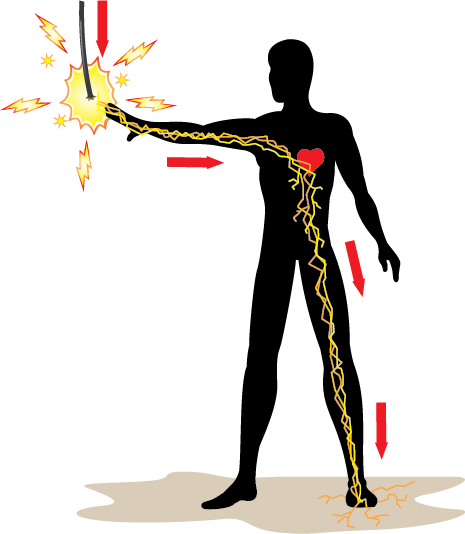
It takes very little current to cause negative effects, with as little as one milliampere being perceptible and as few as 6 milliamperes causing pain and loss of muscle control.
Several types of burns are possible when an electrical incident occurs:
- An electrical burn is caused by current flowing through tissue or bone, generating heat and causing tissue damage.
- This is the most serious form of burn a worker can experience and requires immediate attention.
- An arc or flash burn happens when an electrical arc or explosion occurs near a worker.
- Arc or flash burns can range in severity, but generally require prompt treatment.
- Thermal contact burns can occur when skin touches the hot surface of an overheated electrical conductor, conduit or other energized equipment.
- Thermal burns require immediate treatment but rarely need outside medical attention.
In some cases, people are thrown from the source of the shock, removing them from the circuit. While it is good to not have long term exposure to a circuit, being thrown could cause injuries, such as bruises or broken bones.
On the other hand, “freezing” can occur if the shock prevents the person from pulling away and breaking the circuit. This can be quite dangerous as longer exposure can cause blisters, further reducing the body’s resistance.
After someone receives a severe shock, it is possible they will appear to be fine with no external injuries. However, shocks can cause internal injuries, such as internal bleeding, kidney damage and destruction of tissues, nerves or muscles.
Even if the shock did not appear to be severe, workers should seek immediate medical treatment to check for internal damage.
Safe Work Practices
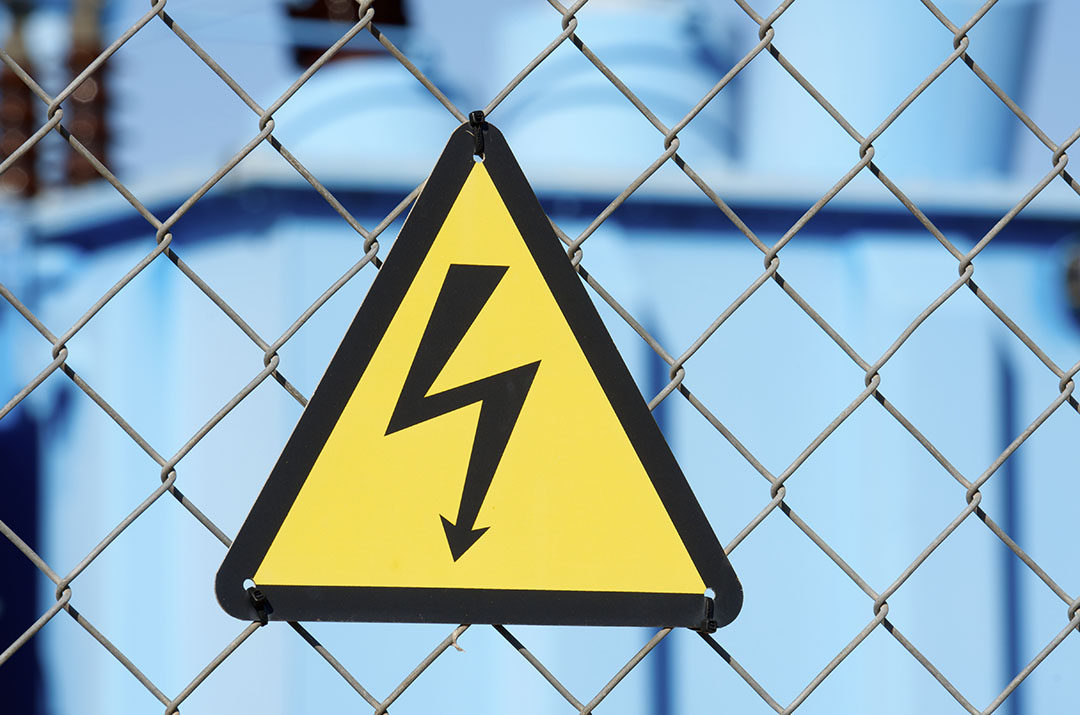
Guarding can help protect workers from electrical incidents by enclosing electric equipment or locating equipment in a way as to prevent accidental contact. Unless an employee is qualified, they should never perform work in areas with unguarded, uninsulated, energized lines or parts of equipment. Signs should be posted outside of electrical rooms or similarly guarded locations warning people about electrical hazards and cautioning them against entering.
A minimum approach distance (MAD) is a set distance from energized equipment where workers are not supposed to enter or put conductive objects. Only qualified, properly protected employees should ever approach or enter the minimum approach distance.
Employers must ensure that any employee required to work close to or within the MAD is appropriately insulated from the energized part, the energized part is insulated from the employee and any other conductive object, or the employee is insulated from any other exposed conductive object under the requirements for live-line barehand work. Unqualified employees should never approach the MAD.
Conclusion
Working with high voltage is dangerous and it does not take a lot of amps to cause pain or loss of muscle control. It is crucial that everyone who works with or near high voltage is aware of the hazards and how to avoid them.
SafetySkills offers a course highlighting Electrical Safety Above 601 Volts to help both employees and employers identify safe practices for working with or around high voltage electricity.

